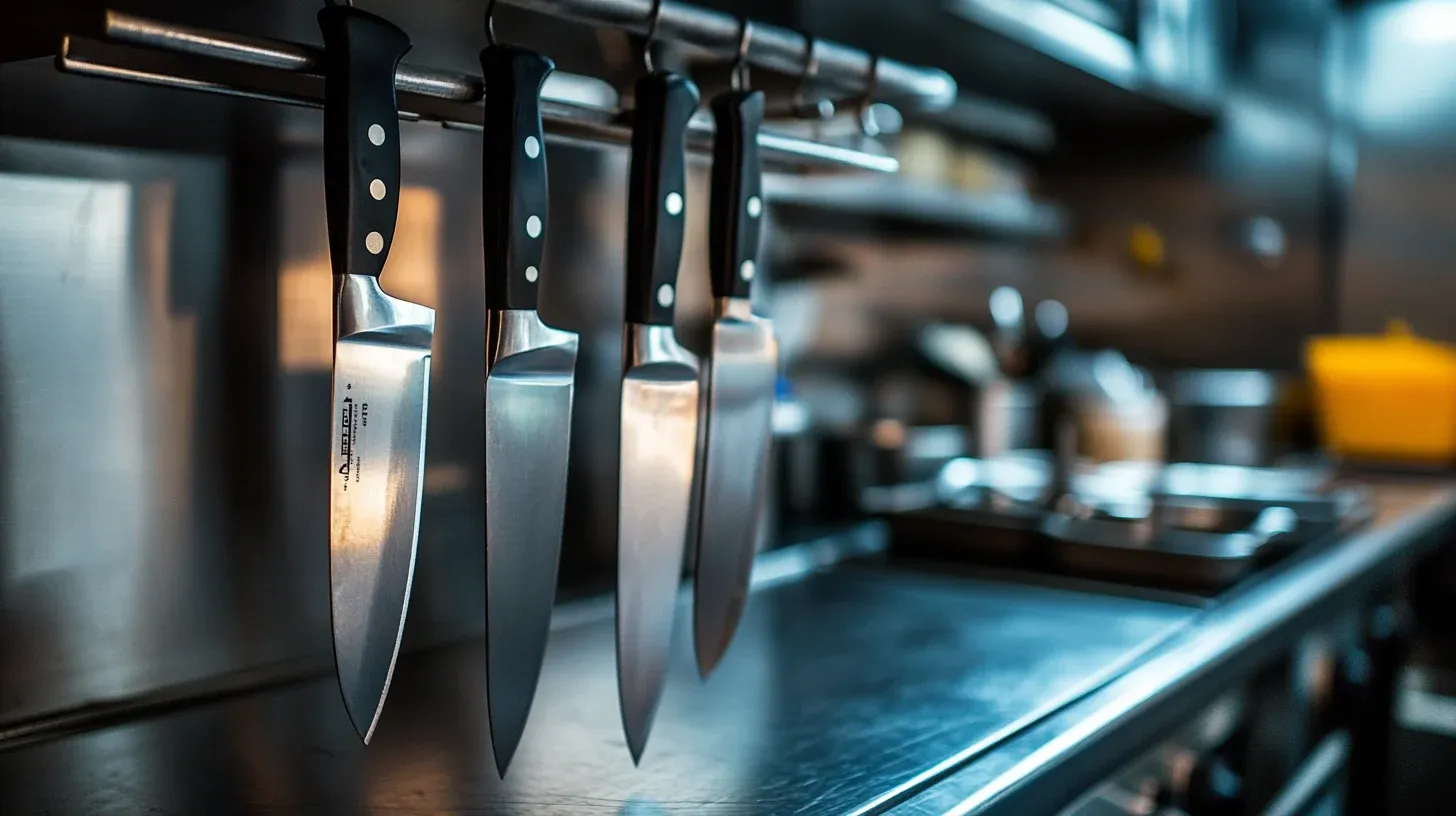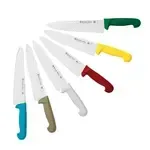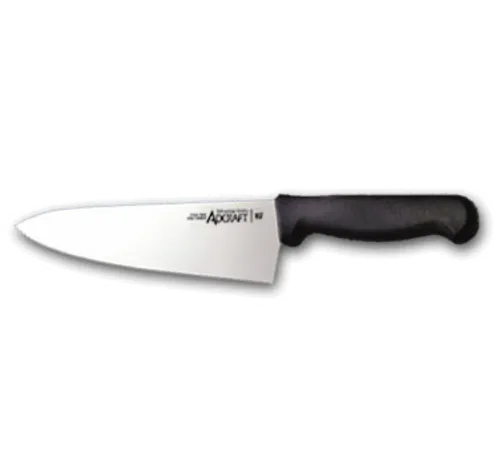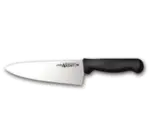
Understanding the Anatomy of a Chef’s Knife
A chef’s knife is an essential tool in every kitchen, revered for its versatility, sharpness, and practicality. Whether you're chopping vegetables, slicing through meat, or finely dicing herbs, the chef's knife is designed to handle a broad range of kitchen tasks. However, have you ever wondered what makes up this versatile kitchen tool? In this article, we will explore the anatomy of a chef’s knife in-depth, breaking down its individual parts and explaining how each contributes to its effectiveness in the kitchen.
The Chef's Knife: A Vital Kitchen Tool
Before we dive into the details of the parts of a chef’s knife, let’s take a moment to consider the knife’s purpose. The chef’s knife is often referred to as the "all-purpose" knife because of its ability to perform nearly any cutting task. It can slice, dice, chop, mince, and even crush. This makes it an indispensable tool in both home kitchens and professional culinary environments. But to truly understand why the chef’s knife is so versatile, you need to examine its anatomy closely. Let’s take a detailed look at each part of this magnificent kitchen tool and discover how it helps you perform at your best in the kitchen.
Blade
The blade is the heart of the chef’s knife. It’s the most prominent and functional part of the knife and the reason the knife is so essential in the kitchen. The blade is the sharp edge of the knife that comes into contact with the food. It’s responsible for cutting, chopping, slicing, and performing most of the work.
Blade Materials: What Are Kitchen Knives Made Of?
Chef’s knives are typically made from steel, which can vary in composition. High-carbon stainless steel is a popular material for chef’s knives because it combines the best qualities of carbon steel (which is strong and hard) and stainless steel (which is resistant to corrosion and rust). Some premium chef knives are made with Damascus steel, which features a layered pattern and offers exceptional strength and sharpness.
The blade’s edge is finely honed to a sharp point, ensuring smooth, effortless cutting. Over time, the blade will naturally dull due to frequent use, and it will need to be sharpened to maintain its performance.
The length of the blade varies, but the most common chef’s knife is about 8 inches long. Longer blades (10 inches or more) offer additional cutting surface but can be less nimble for smaller tasks. The size of the blade you choose depends on the type of cutting you will be doing most frequently.
Spine
The spine of a chef’s knife is the top edge of the blade, opposite the cutting edge. It is typically thick and not sharp. While the spine is not used for cutting, it plays a crucial role in the overall design and structure of the knife. The spine provides strength and stability, ensuring the knife doesn’t bend or break under pressure.
A well-made chef’s knife has a spine that tapers slightly toward the tip, allowing for balance while you work. The spine's thickness contributes to the weight and balance of the knife, which is essential for comfortable use during prolonged cutting sessions.
The spine of a high-quality chef’s knife will typically be made of the same material as the blade, providing uniform strength and durability.
Tip
The tip of a chef’s knife is the narrow, pointed portion at the front end of the blade. The tip is ideal for precise, detailed cutting tasks. It is used for intricate slicing, mincing, and scoring. If you're finely chopping herbs or making detailed cuts in delicate vegetables, the tip of the knife will be your go-to tool.
Because of its fine point, the tip of the chef’s knife is also perfect for piercing or cutting through tougher skins, such as when you're slicing into melons or butternut squash. Precision is key when using the tip, and a well-maintained knife will allow you to execute delicate tasks with ease.
Heel
The heel of the knife refers to the rear portion of the blade, located just before the handle. This part of the blade is slightly curved and is ideal for cutting through dense or hard foods, such as root vegetables, bones, and thick-skinned fruits. The heel allows for a rocking motion that enables the user to chop quickly and efficiently.
When you need to put more pressure behind a cut, the heel provides the stability and leverage you need to make quick work of tough ingredients. The broader, thicker edge of the heel is perfect for heavy-duty tasks like breaking down chicken or cutting through tough stalks of celery.
The heel of a chef’s knife provides balance by ensuring that the blade’s weight is distributed evenly across the cutting surface. This makes cutting through tougher foods easier without straining your wrist or forearm.
Bolster
The bolster is the thick, solid section between the blade and the handle of the knife. It serves multiple purposes in the design of the chef’s knife. One of its most important functions is to provide balance. The bolster helps ensure that the knife feels secure in your hand and that the weight is distributed properly from the tip to the handle.
Additionally, the bolster provides a place to rest your hand when holding the knife. Many chefs choose to grip the knife with their fingers wrapped around the bolster for added control during cutting tasks. It also serves as a safety feature by preventing your hand from slipping onto the blade while using the knife.
The bolster is typically made from the same material as the blade, though some knives have bolsters made from composite materials. Some premium chef’s knives feature a full bolster, which extends all the way around the blade, while others have a partial bolster, which only covers part of the blade near the handle.
Tang
The tang is the part of the blade that extends into the handle of the knife. This is one of the most important structural features of a high-quality chef’s knife. A full tang means that the blade extends the entire length of the handle, providing superior strength, stability, and balance.
A full tang gives the knife extra durability, as the blade and handle are securely attached. Knives with full tangs are generally considered to be of higher quality because they offer better balance and a more solid feel. A knife with a full tang is less likely to break or loosen over time, making it a good long-term investment.
There are also partial tang knives, where the tang extends only partway into the handle. While these knives can be less expensive, they may not offer the same level of balance and durability as full-tang knives. However, many professional chefs prefer full-tang knives because of their superior performance and longevity.
Handle
The handle is where you grip the knife, and it is arguably the most important part when it comes to comfort and control. The handle of a chef’s knife is designed to ensure a secure, comfortable grip during cutting tasks. Handles come in a variety of materials, including wood, plastic, and composite materials like fiberglass and rubber. Each material offers its own set of advantages.
- Wood Handles: Wood offers a traditional, aesthetic feel and is often used in premium knives. However, wood handles require more maintenance as they can crack or warp if exposed to moisture frequently.
- Plastic Handles: These are durable and easy to clean, making them a popular choice for commercial kitchens. They also tend to be more affordable.
- Composite Handles: Made from materials like fiberglass and resin, composite handles are a blend of durability and comfort. These handles are strong, non-porous, and resistant to bacteria, making them a practical option for everyday use.
In addition to material, the handle’s shape is critical to ensuring comfort. The handle should fit well in your hand, providing a natural grip that prevents slippage. Some knives feature ergonomic handles that mold to your hand, making them more comfortable during extended use.
The Chef's Knife: Purpose and Versatility
The chef’s knife is known for its versatility, which is why it’s often considered the most important knife in a kitchen. Whether you're chopping, slicing, dicing, or mincing, the chef’s knife is designed to handle nearly any cutting task with ease. The broad, curved blade is ideal for rocking motions when chopping, while the sharp edge allows for clean, precise cuts when slicing.
Chef’s knives are designed with balance and control in mind. Whether you’re working with delicate herbs or tough cuts of meat, the design of the chef’s knife ensures you can cut safely and efficiently.
Knife Anatomy at a Glance: The 7 Parts of a Chef's Knife
To quickly summarize, here are the seven main parts of a chef’s knife:
- Blade – The cutting edge of the knife used for slicing and chopping.
- Spine – The top edge of the blade, providing strength.
- Tip – The pointed end used for precision cuts.
- Heel – The rear portion of the blade, ideal for tough cuts.
- Bolster – The thick junction between the blade and handle for balance.
- Tang – The part of the blade extending into the handle for stability.
- Handle – The gripping area that provides control during use.
Conclusion
Understanding the anatomy of a chef’s knife is crucial for both home cooks and professional chefs. Knowing the function of each part, from the blade to the handle, allows you to choose the right knife for each task and to handle it with precision, comfort, and safety. Whether you are using a chef's knife to chop vegetables, slice meats, or finely dice herbs, understanding its components ensures that you make the most of its versatility. By investing in a high-quality knife and caring for it properly, you can achieve culinary excellence in the kitchen.







